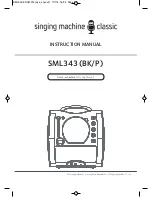
V4.2
200A AC/DC Dial Control TIG Welder 202KE
8785081
Visit www.princessauto.com for more information
13
regulator’s explosive ejection from the cylinder.
8. Always secure a gas cylinder in a vertical position to a welding cart or
other fixed support with a steel chain, so it cannot be knocked over.
a. Away from areas where they may be struck or subjected to physical
damage.
b. A safe distance from arc welding or cutting operations and any other
source of heat, sparks or flame.
b. Do not use as an improvised support or roller.
9. Always place the cylinder cap securely on the cylinder unless it is in use or
being serviced.
10. Do not use a wrench or hammer to open a cylinder valve that cannot be
opened by hand. Notify your supplier for instructions.
11. Do not modify or exchange gas cylinder fittings.
12. Close the cylinder valve and immediately remove the faulty regulator from
service for repair, if any of the following conditions exist:
a. Gas leaks externally.
b. Delivery pressure continues to rise with the downstream valve closed.
c. The gauge pointer does not move off the stop pin when pressurized or
fails to return to the stop pin after pressure is released.
13. Do not attempt to make regulator repairs. Send faulty regulators to the
manufacturer's designated repair center.
14. Do not weld on the gas cylinder.
15. Keep your head and face away from the cylinder valve outlet when opening the
cylinder valve.
16. Compressed gas cylinders must not be located in a confined space with the
person welding to prevent the possibility of leaks displacing the oxygen.
ELECTRICAL SAFETY
1. Do not come into physical contact with the welding current circuit. The
welding current circuit includes:
a. The workpiece or any conductive material in contact with it.
b. The ground clamp.














































